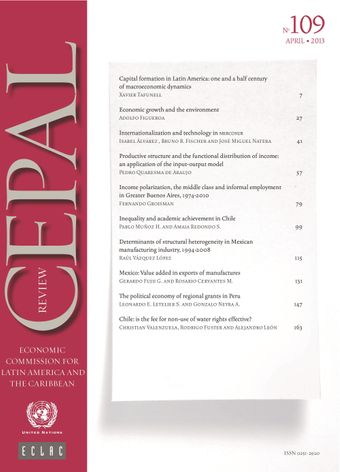-
Capital formation in Latin America: One and a half century of macroeconomic dynamics
- Source: CEPAL Review, Volume 2013, Issue 109, Jun 2013, p. 7 - 26
- Spanish
-
- 29 Jun 2013
- Previous Article
- Table of Contents
- Next Article
Abstract
Macroeconomic studies indicate that physical capital formation has played a pivotal role in long-term economic growth. These studies have been hampered, however, by a data constraint: in order to pinpoint exactly what the role of capital formation has been, a larger empirical database –larger in terms of both the time span and the geographical area covered– is needed. This study addresses that problem by providing new and very extensive series on capital formation in Latin America. It also describes the different series used to identify long, medium and short-term movements. One of the outstanding features of these investment trends were their marked instability up to 1950. Another salient aspect has been the more robust growth in investment seen in the second half of the nineteenth century, which actually outdistanced the growth spurt that occurred during the “golden age” of 1950-1980.





